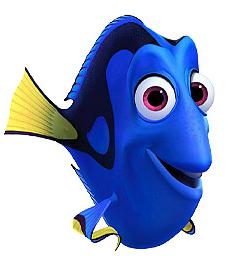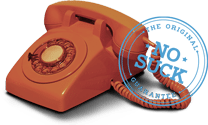 Here’s the thing. I went to a School School but now I teach at an Ad School. And it’s really different.
Here’s the thing. I went to a School School but now I teach at an Ad School. And it’s really different.
At School School, you study the books they assign you, do the homework they give you, take the tests they hand out in class. You’re checkin’ the boxes so you can make your parents proud and get good grades.
Good grades are fantastic if you want to be a certified public accountant or a lawyer. (Please, don’t be a lawyer.)
However, for those of you trying to get into the ad business (or any creative industry for that matter), let me assure you that no recruiter or CD will ever ask you what your GPA was. They will not care what school you attended, nor will they care if you even graduated. All that counts is your book. “Show me the work” comes before “Show me the money.”
But getting to a great ad portfolio is very different — and much harder — than getting great grades. Mostly because there’s a single correct answer for any test question, one you can usually find written down somewhere in a book. A great portfolio, on the other hand, is a big hot mess of mind-roastingly cool ideas pulled out of the thin blue air and executed so well they raise the hair on an interviewer’s arms. But the main difference is this: the really great books are the ones filled not with problems someone solved, but problems they found.
Problem finding is way cooler than problem solving. Problem solving is easy. You just wait at your desk and after a while someone brings you a problem to solve. And even if it’s a hard problem, it still has an answer, maybe several, but there is an answer.
The thing about problem-solving in advertising? It’ll never take you to an entirely new place. And if you’re not doing something entirely new, well, it’s a little bit like this marvelously snarky news item from The Onion.
‘TACO BELL’S FIVE INGREDIENTS COMBINED IN TOTALLY NEW WAY.”
“LOUISVILLE, KY–With great fanfare Monday, Taco Bell unveiled the Grandito, an exciting new permutation of refried beans, ground beef, cheddar cheese, lettuce, and a corn tortilla. ‘You’ve never tasted Taco Bell’s five ingredients combined quite like this,’ Taco Bell CEO Walter Berenyi said. ‘With its ground beef on top of the cheese but under the beans, it’s configured unlike anything you’ve ever eaten at Taco Bell.’”
See? You’re just sorta reorganizing things, stuff we’ve all seen before. But problem finding?
Problem finding is about exploring a thing so thoroughly, digging so deep, and thinking so creatively, that you begin to see around corners, and start asking questions — usually really stupid questions – and finally you flip the game so hard on its head that instead of thinking outside the box you sell the goddamned box on eBay and reinvent the problem, opening a hidden door that leads to more doors that all open into new and interesting places.
Remember, there was no job order for, say, Halo, or iTunes. Nobody walked in anyone else’s office and said, “Damn, if only you could solve this problem.”
Back in school, yeah, we solved problems; we sought order and found it in the predictable corners of the isosceles triangle. But in ad school, we’re looking for solutions to problems we don’t even know we have. Think about it. What “problem” did Sgt. Pepper’s Lonely Hearts Club Band solve? What problem did YouTube solve?
Where problem solving ends after you solve the problem, problem finding means you’re just gettin’ started. And these cool discoveries, almost all of them happen out of a sense of play, not work, but play; they come out of the clear blue; out of a “Hey what if we…”
This leads me to a piece of advice I see becoming more and more relevant: “Always be inventing.”
Inventing means making something new; which is basically problem finding in my book. Inventing things uncovers new problems because with each iteration of a new idea, we see what are called “adjacent possibilities,” the definition of which somebody (can’t find the source just now) put this way: “The adjacent possible is what can be done with the next iteration using the elements present in this one.” The boundaries of the adjacent possible just keep growing as you explore the boundaries; doors opening onto doors.
So, don’t worry about grades. Just keep inventing.
(Or if you prefer, the Ellen-DeGeneres version from Finding Nemo: “Just keep swimming, just keep swimming.”)



 My webinar on achieving creative break-throughs airs this Thursday at 1pm EST. Pictured here, Zoom recording of pre…
My webinar on achieving creative break-throughs airs this Thursday at 1pm EST. Pictured here, Zoom recording of pre… 
excellent. Thanks.
Ernie
I got 99 problems, but ain’t found the one.
Thanks for this article. I’m new to copywriting and I’m wondering if anyone can share an example of Problem Finding in an advertisement.
I hate to be someone who asks a simple question then answers it, but I’m pretty confident in my ability to be absolutely wrong. Does Problem Finding mean you’re looking for additional reasons to market a product–which will result in a new ways to market that product? Like, if a company’s branding is associated with a particularly bright shade of red, would Problem Finding be recognizing that some people who happen to be color-blind won’t notice the red–therefore the solution would be an ad that expresses the company’s choice of red in the brand?
Thanks to anyone who spends the time to respond!
Hi,
Great post. Adjacent possible, I’ve seen that, and teach a bit about it, in Steven Johnson’s essential book, “Where ideas come from, A natural history of innovation.” I love your idea of finding problems instead of solving them. That is the real creative act. If you find the right, real problem, the strategy / solution falls right out of it.
Thanks,
Ken Krimstein
I’ve been beating this drum for years, as well as beating it into the heads of my students. Half the job in an ad school is re-programming kids who have been brainwashed by an educational system that has conditioned them to ingest curriculum, barf it up verbatim and get 90s for it. Not a recipe for creativity, innovation or, especially, risk-taking. The smart (talented, ambitious) ones always figure out that the only things that matter when you leave school are: How good is your book? and do people want to work with you?
The system, however, needs to count its beans, so beans we must provide it with. So long as students clearly understand that marks are best thought of as a currency that only has use & value & meaning inside its own country (the educational system), but no reliable exchange value outside of it.
Sorta like old Soviet rubles, or Zimbabwean dollars.
Thanks for the post — I broadcast it around my department.
Perfect. Love this.
BTW, my two favorite words used in succession; “what if”…
My other favorite word…”free”.
Love it. True.